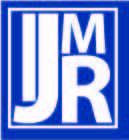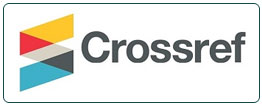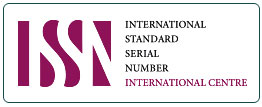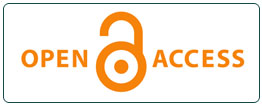GENDER-BASED COMPARATIVE STUDY OF THE INFLUENCE OF Cola nitida ON THE SWEAT RATE OF HUMANS
 Abstract views: 35
/
Abstract views: 35
/  PDF downloads: 20
PDF downloads: 20
DOI:
https://doi.org/10.61705/kkkre126Keywords:
Cola nitida, Hypertensive, bicycle Ergometer, exercise conditionAbstract
The study focused on how Cola nitida might affect the sweat rate of male subjects compared to their female counterparts. A total of sixty participants (30 males and 30 females), all inexperienced with consuming cola nuts, were involved, with ages ranging from 18 to 28 years. The participants were categorized into three groups: underweight (10), normal weight (10), and overweight (10). Individuals with hypertension, renal issues, or any cardio-pulmonary conditions were excluded. The study examined sweat rates under two chamber conditions: normal temperature (27°C, 70% RH) and elevated temperature (37°C, 90% RH). In both scenarios, participants remained seated quietly for 20 minutes. In a third scenario, they exercised on a bicycle ergometer at 750 J/min for 20 minutes in a normal temperature environment. All activities were performed prior to ingesting Cola nitida. Each subject was given 0.5g/kg of Cola nitida, chewed as a bolus, followed by 50 ml of deionized water, then rested for 90 minutes. Afterward, the participants were placed in a sweat chamber, where sweat was collected using the sweat capsule method to determine their sweat rate. The results showed a significant (P<0.05) reduction in sweat rates for female underweight (UW) and normal weight (NW) participants compared to males under both normal and elevated temperatures after consuming Cola nitida. However, no significant differences were observed between males and females during exercise conditions following ingestion.
References
Blair, S.N. and Church, T.S.(2004): The fitness, obesity and health equation: is physical activity the common denominator? JAMA.292: 1232–1234.
Cheuvront, S.N., Kenefick, R.W., Montain, S.J. and Sawka, M.N. (2010): Mechanisms of aerobic performance impairment with heat stress and dehydration. Journal of Applied Physiology 109: 1989-1995.
Chukwu, LO., Odiete, WO. and Briggs, LS. (2006): Basal metabolic regulatory responses and rhythmic activity of mammalian heart to aqueous kola nut extracts. African Journal of Biotechnology 5(5): 484-486.
Coogan et al., 1997;
Cureton, K.J., Warren, G.L., Millard-Stafford, M.L., Wingo, J.E., Trik, J. and Buychx, M. (2007): Caffeinated sport drink: Ergogenic effects and possible mechanism. International Journal of Nutrition and ExerciseMetabolism17 (1): 35-55.
Dill, D.B, Yousef, M.K., Goldman, A., Hillyard, S.D. and Davis, T.F. (1983): Volume and composition of hand sweat of white and black men and women in desert walks. American Journal of physiology and Anthropology 61: 67-73.
Eaton, S.B. and Eaton, S.B.(2003):An evolutionary perspective on human physical activity: implications for health. Comp. Biochem. Physiol.A Molecular Integrative and Physiology 136: 153–159.
Faulkner, W.R. (1982): Selected method for the small clinical chemistry Laboratory. “Magnesium in Biological Fluids.” AACC., Washington, D.C. p. 277.
Henry, J.B. (1984): Clinical diagnosis and management, 17th ed., W.B. Saunders, Co., Philadephia, p. 157.
Igwe, S.A., Akunyili, D.N. and Ikonne, E.U. (2007): Ocular Effects of Acute Ingestion of Cola nitida (Linn) on Healthy Volunteers. South African Optometry 66 (1): 19-23.
Inoue Y, Tanaka Y, Omori K, Kuwahara T, Ogura Y. and Ueda H (2005): Sex- and menstrual cycle-related differences in sweating and cutaneous blood flow in response to passive heat exposure. European Journal of Applied Physiology, 91:323-332.
Kenchaiah, S., Evans, J.C. and Levy, D. (2002): Obesity and the risk of heart failure. New England Journal of Medicine 347:305-313.
Kokkinos, P.F., Narayan, P., Colleran, J.A., Pittaras, A., Notargiacomo, A., Reda, D. and Papademetrious, V. (1995): Effects of Regular exercise on Blood Pressure and Left Ventricular Hypertrophy in African-American Men with Severe Hypertension. New England.Journal of Medicine.333: 1462 – 1467.
Laux, T.S., Bert, P.J., Barreto Ruiz, G.M., Gonzalez, M., Unruh, M. and Aragon, A. (2011): Nicaragua Revisited Evidence of Lower Prevalence of Chronic Kidney Disease in a High-Altitude, Coffee-Growing. Journal of Nephrology22: 3.
Marriot, B.M. (1993): Nutritional needs in hot environments: Application for military personnel in field operations. Washington, D.C. National Academy Press.
McCarthy, D. M., Mycyk, M. B. and DesLauriers, C. A. (2008): Hospitalization for caffeine abuse is associated with abuse of other pharmaceutical substances. American Journal of Emergency Medicine 26: 799–0210
Mednick, S. C., Cai, D. J., Kanady, J. and Drummond, S. P. A. (2008): Comparing the benefits of caffeine, naps and placebo on verbal, motor and perceptual memory. Behaviour Brain Research 193: 79–8610.
Morimoto, T., Slabochova, Z., Naman, R.K. and Sargent, F. (1967): 2nd Sex differences in physiological reactions to thermal stress. Journal of Applied Physiology 22:526–32.
Obika, L.F.O., Babatunde, E.O., Akoni, F.A., Adeoko, A.O., Nsaho, J., Reza, H. and Williams, S.A. (1995): Kolanut (Cola nitida) enhances antidiuretic activity in young dehydrated subjects. John Wiley and Sons Ltd.
Omorede, E.Osayande, Eloghosa, E. Ogbonmwan, Andrew, C. Ugwu (2016): Sweat rate and electrolyte composition in young women of varying body mass indices during moderate exercise. Journal of Biosciences and Medicines.4:14-22.
Pourhoseingholi et al., 2013;
Semenza, J.C. (1999): Acute renal failure during heat waves. American Journal of Preventive Medicine 17:97.
Simon, H.B. (1993): Hyperthermia. New England Journal of Medicine 329:483–7.
Tietz, N.W. (1976): Fundamentals of clinical chemistry, W.B. Saunders, Philadephia, PA, p. 897.
Troy, D. C., Robert, W. K., Samuel, N. C., Henry, C. L. and Michael, N. S. (2008): Effect of Heat Acclimation on Sweat Minerals. American College of Sports Medicine.
Ugwu, A.C. (1978): Some Aspects of Sweat in Nigerians. Nigerian Journal Physiology Science .C2/81, 29P.
Ugwu, A.C. (1985): “Cardio-respiratory changes in Nigerians sweating under heat and exercise conditions”. International Resource Comm. Sys.(IRCS). 13: 563 – 564.
Ugwu, A.C. (1985):“Sex differences in sweat rates and composition in a human populations indigenous to a tropical hot and humid climate”. International Resource. Comm. Sys. (IRCS);13: 938 – 939.
Ugwu, A.C. (1986):“The time course of sweat excretion among men of tropical hot and humid climates”. International Resource Comm. Sys (IRCS). 14: 459 – 460.
Ugwu, A.C. (1987): “Calcium and Magnesium concentrations in sweat of normal Nigerian men sweating under heat and exercise conditions”. Medical Science Research.15: 1259 1250.
Ugwu, A.C. (2007): Sweat: More than just perspiration. University of Benin Inaugural Lecture Series.Number 90.
Ugwu, A.C. and McGrath, J.C. (1999): “The problems of desensitization in calciumconcentration response curves; A proposed Answer”. African Journal of Medical and. Pharmaceutical Sciences 1: 12-20.
Ugwu, A.C. and Oyebola, D.D.O. (1996): “Sweat collection made simple.” Journal of Medical Laboratory Sciences.5:171-176.
Ugwu, A.C.(1987): Calcium-sensitivity and temperature effects on the desensitization of responses in different blood vessels isolated from the rat, rabbit and cat. British.Journal of Physiology.392: 87P.
Ugwu, A.C.(1996): “A Review of Cardiovascular basis of fitness and wellness from exercise”. Nigerian Journal Edition Resource. 3: 72 – 90.
Ugwu, A.C.and Oyebola, D.D.O. (1992): “Effects of temperature and exercise on sweat rate and sweat electrolyte loss in Nigerians.” Nigerian Journal of Physiological Sciences.8:92-101.
Umoren, E.B., Osim, E.E. and Udoh, P.B. (2009): The Comparative Effects of Chronic Consumption of Kola Nut (Cola nitida) and Caffeine Diets on Locomotor Behaviour and Body Weight in Mice. Nigerian Journal of Physiological Sciences.24 (1): 73-7
Additional Files
Published
Issue
Section
License
Copyright (c) 2024 International Journal of Medical Research

This work is licensed under a Creative Commons Attribution 4.0 International License.
All papers should be submitted electronically. All submitted manuscripts must be original work that is not under submission at another journal or under consideration for publication in another form, such as a monograph or chapter of a book. Authors of submitted papers are obligated not to submit their paper for publication elsewhere until an editorial decision is rendered on their submission. Further, authors of accepted papers are prohibited from publishing the results in other publications that appear before the paper is published in the Journal unless they receive approval for doing so from the Editor-In-Chief.
IJMR open access articles are licensed under a Creative Commons Attribution-ShareAlike 4.0 International License. This license lets the audience to give appropriate credit, provide a link to the license, and indicate if changes were made and if they remix, transform, or build upon the material, they must distribute contributions under the same license as the original.




